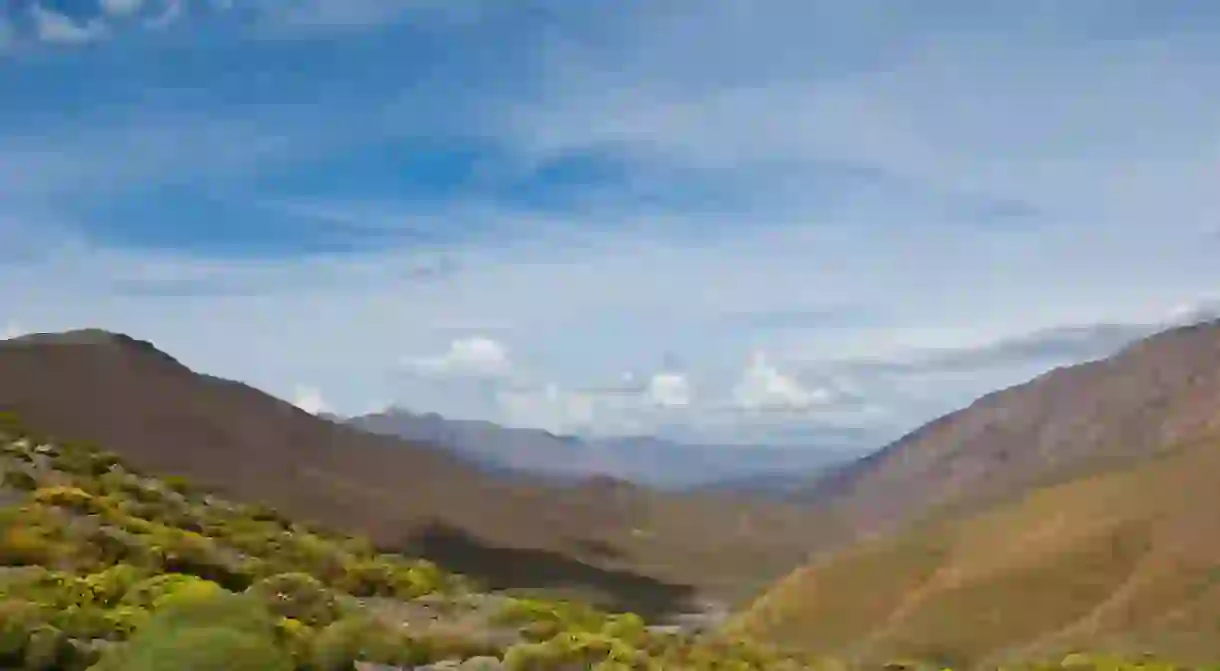A Trekker's Guide to Exploring Morocco

You’ve may have already explored by camel, donkey, or on horseback. Get your walking gear ready and limber up though, because it’s time to go trekking. From jagged mountain ranges to rugged coastal areas, and from barren deserts to national parks, trekkers can enjoy varied scenery on an exploration of Morocco.
Why go trekking in Morocco?
Morocco offers a rich diversity of landscapes that are suitable for trekkers of most experience and fitness levels. Whether you want to enjoy the great outdoors for just a day, or you want to get active on multi-day treks, with nights spent in local villages or under canvas, Morocco offers trekking trails of various lengths. Guides are available in many areas if you’d rather not go at it alone.

Where to go
Choosing where to go trekking in Morocco can be a tough call, thanks to the myriad great options available. Some top spots include:
Rif Mountains
Although not as famous as the Atlas Mountains, the Rif Mountains offer terrific trekking opportunities too. Enjoy day hikes from the charming blue town of Chefchaouen. Spend an entire day climbing Jebel al-Kalaa, and soak up the splendid views over the town and agricultural areas when you reach the summit. Alternatively, Talassemtane National Park is ideal for longer overnight treks.
M’Goun Massif
Located in the High Atlas Mountains, trekking at the scenic M’Goun Massif can be as relaxed or as challenging as you like. Visit local Berber villages and soak up the views or, if you’re feeling energetic, spend some time acclimatising and try to conquer the soaring 4071-metre-high peak of M’Goun.
Ifrane
Often referred to as the Switzerland of Morocco, it’s no surprise that there are abundant trekking trails around scenic Ifrane. Atlas cedars line the slopes and the rare Barbary macaque lives in the forests. Head to Ifrane National Park for some of the best nature in the Middle Atlas Mountains, or follow one of the walking trails close to the town centre.

Paradise Valley
Paradise Valley is one of the most popular places for trekking in the Anti Atlas Mountains. Lush greenery grows in the picturesque valley and the smooth rocks are perfect for taking a break. There are waterfalls in the area, so take your swimming gear and you can refresh your muscles with a swim in the inviting pool. Get a taster and cover the highlights on a day trek, or spend longer to fully explore the area and the small villages.
Jbel Saghro
A mountain range in southern Morocco, Jbel Saghro sees little rainfall throughout the year. Indeed, it is the driest mountain region within all the Atlas Mountains. Little grows here and the area is sparsely populated. The barren and arid area has a number of peaks and passes, with a few Berber villages dotted here and there. Peer into some of the caves and spot old cave paintings.
Toubkal Circuit
One of Morocco’s most challenging treks, the Toubkal Circuit should only be attempted by people who have extensive trekking experience and good fitness levels. Trekkers should also spend time acclimatising before starting the trek. The route generally takes a week to finish. Experience the natural beauty and unforgiving conditions of the High Atlas mountains as you go around the Toubkal Massif. The trek rises and falls, encompassing high passes and deep valleys. Berber villages speckle the mountains and the vistas are incredible.

Best times of year to trek in Morocco
Late spring and early autumn are generally the best times to enjoy Morocco’s varied treks, due to pleasantly warm temperatures. Spring is also a great time to see wildflowers in bloom in many places. The cooler conditions in the mountains mean that trekking is possible in summer too. Ifrane in particular is a favourite summer destination.
Treks at lower elevations are often possible in the winter. Experienced trekkers may relish the challenge of snowy treks but, in the High Atlas Mountains especially, extra precautions should be taken.

Tips for trekking in Morocco
People should carry plenty of water on their trekking adventures, as with anywhere in the world. Although not necessary, walking poles can make steep ascents and descents a little easier.
Proper acclimatisation is essential for conquering some of the country’s highest peaks, such as Jbel Toubkal (the highest mountain in North Africa), M’Goun, and most mountains in the High Atlas range.
Dressing conservatively is advised for trekking in areas that will pass through remote villages. Think t-shirts instead of spaghetti-strap vest tops, and knee-length shorts instead of hot pants. Of course, proper footwear should always be worn.
Exploring with a local guide is highly recommended for many routes. Locals know the area and potential hazards. They also know how to get help in an emergency. Additionally, their insights can be invaluable on your trek. Choose a professional guide, however, rather than a local looking to make some quick cash. And, don’t forget to tip your guide at the end of the trek.














